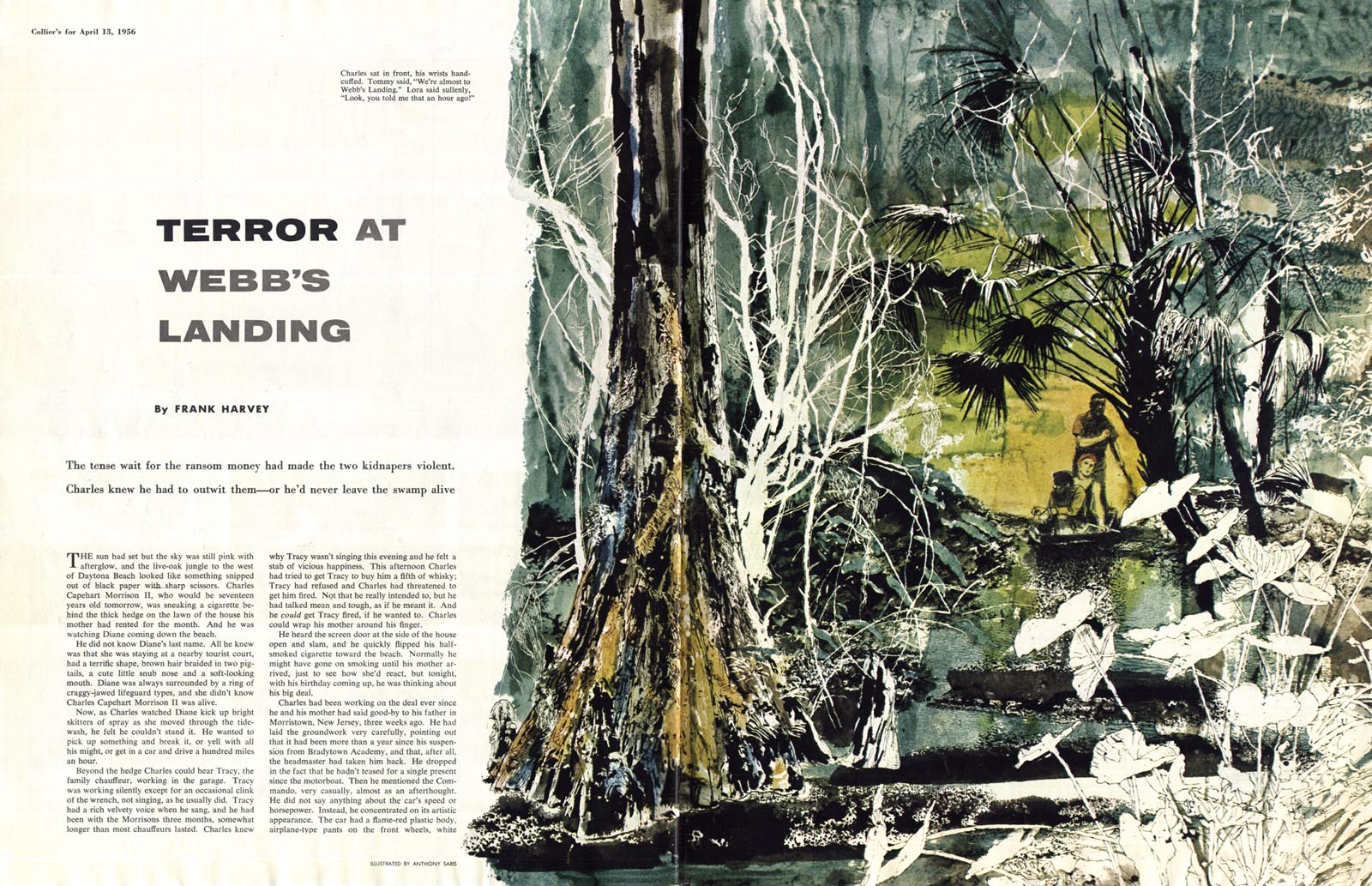
As a neophyte illustrator, Saris (who considered himself an artist foremost and loathed the term "commercial art") initially had a wide-ranging portfolio with samples done in may styles and mediums.
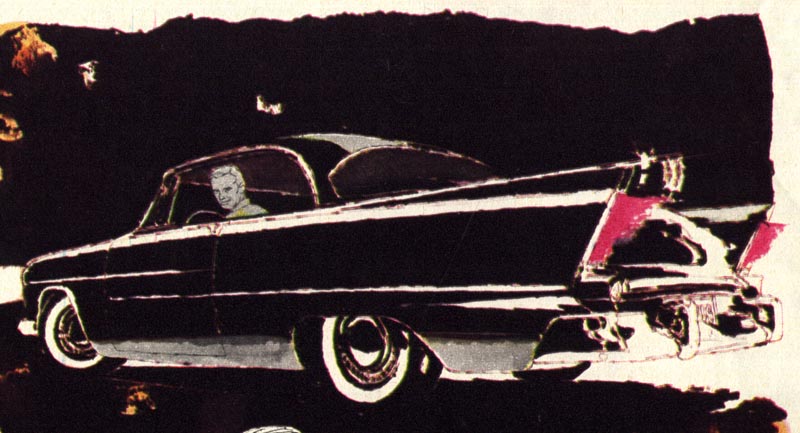
He found that his line drawings with colour garnered the most favourable reaction from the art directors he visited. He also sensed that ADs were looking for artists with distinctly individual styles. Saris quickly revamped his portfolio so that it contained only line drawings with one colour added. What a refreshingly pragmatic attitude!
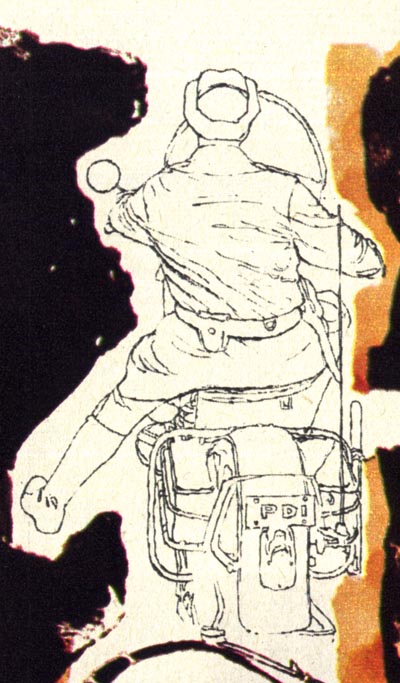
Keeping in mind both the the practical consideration of fulfilling the wishes of his client and his personal desire as an artist to experiment and express himself, Saris would then look for ways to enhance the basic process of line with colour. here, for example, he incorporated an actual section of a police fingerprint document...
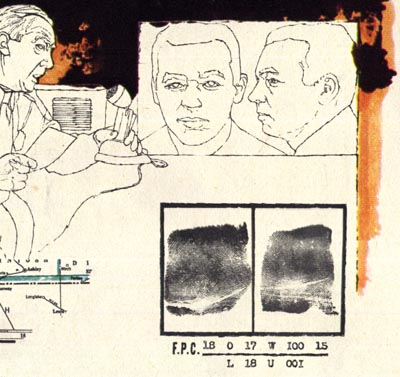
... as well as some actual sections of a state map, montaged onto the underlying hand drawn artwork.
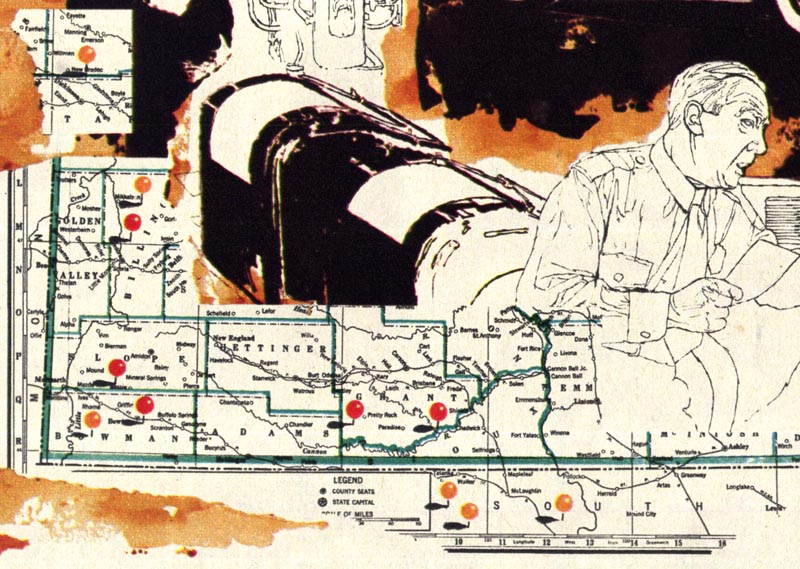
The results reflect a thoughtful philosophy of creative process that Saris described thus: "In my work I try not to impose my own convictions or concepts upon the project, but prefer contrarily that the situation be permitted to show the way so that I may follow with an open mind and a flexible viewpoint."
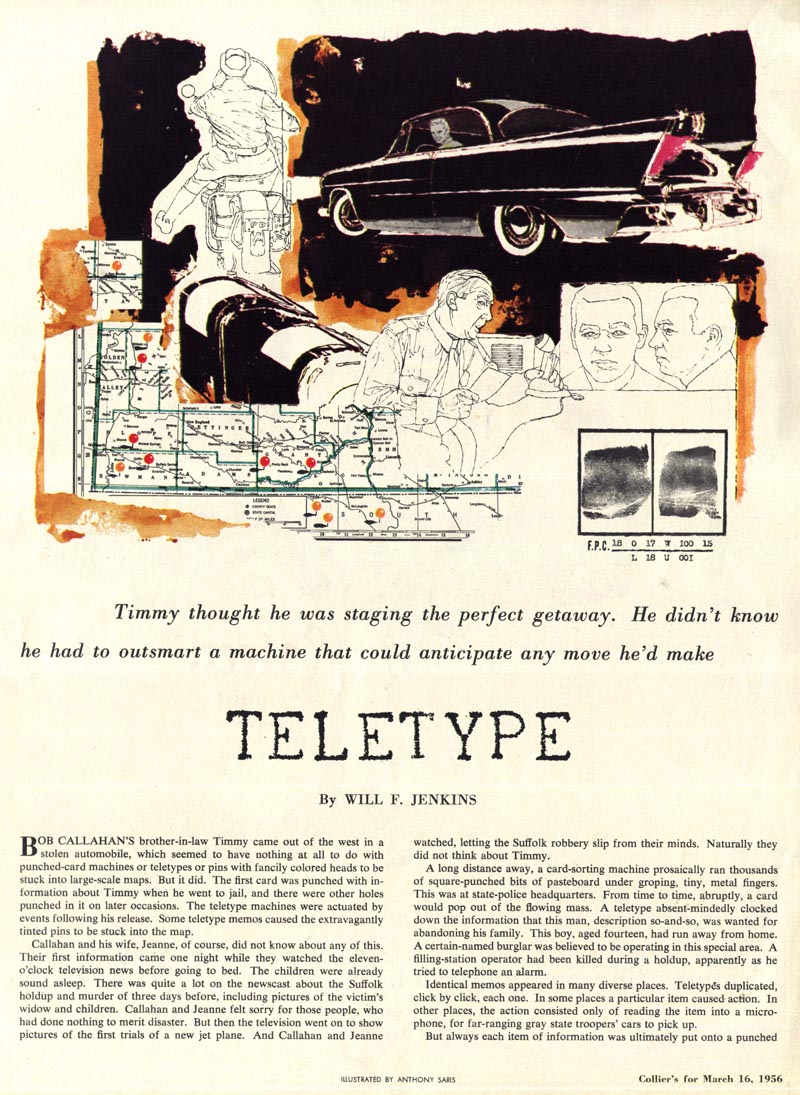
"This is an important point in my philosophy - that the job, and not I, dictate the procedure."

What initially was undertaken out of pragmatism ( Saris saw ink line drawings as his only shot at landing assignments ) became in time a sincere love for a medium. Because Saris applied himself so passionately to developing his specialty, he was kept busy with ink drawings for a huge variety of clients for many years.
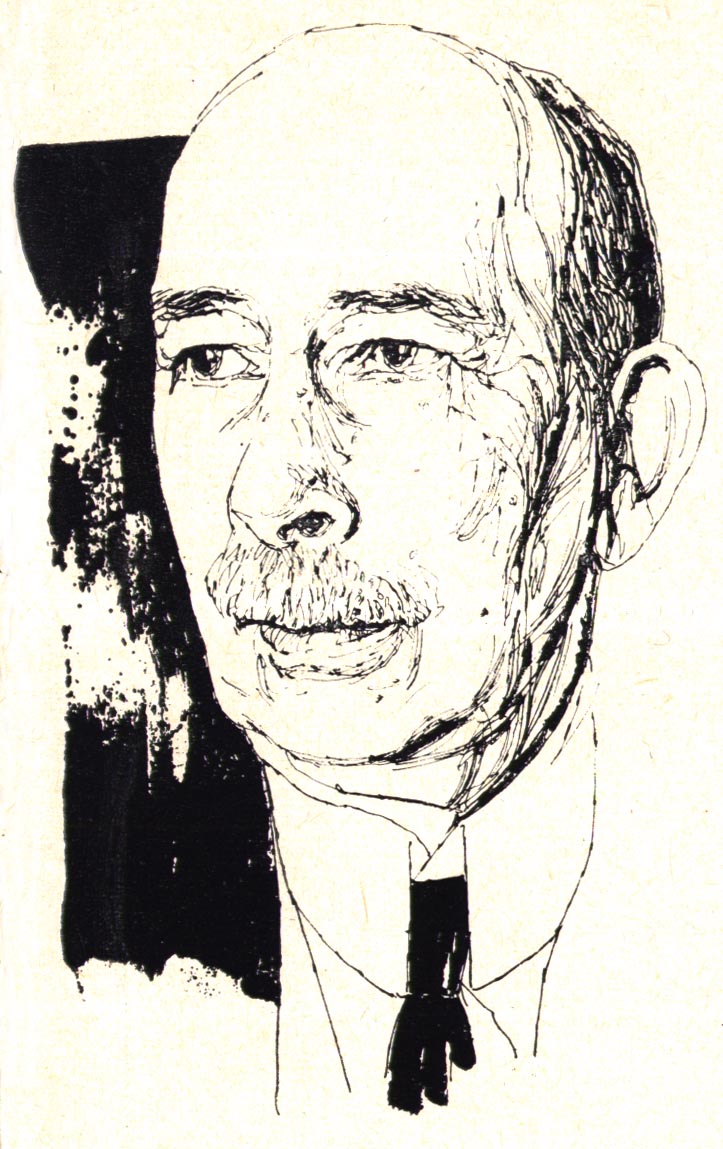
Saris cited the work of Ben Shahn, Paul Klee, George Grosz among those he most admired and studied. He said he regretted not discovering the work of Arthur Rackham sooner, but included him and Edwin Austin Abbey and inspirations.
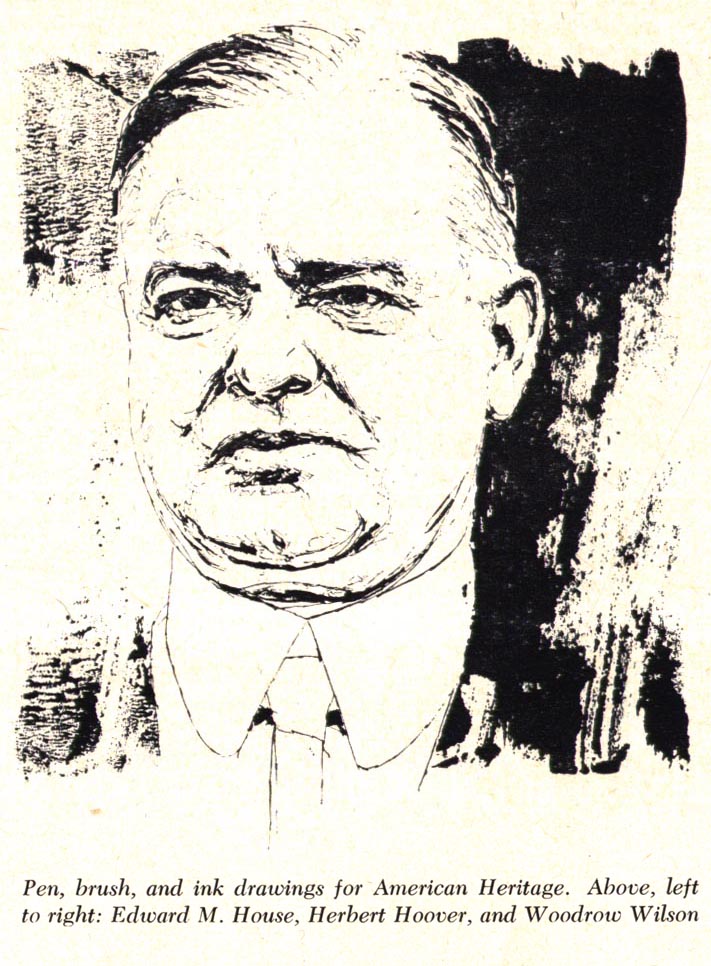
Asked at the time of his America Artist interview (1959) why he thought he was enjoying such success, Saris said the key was the rise of photography in commercial picture-making. Literal realism in painted illustration simply could not compete because it was too closely related to what could be achieved with a photograph. Saris felt the key to his success was to create artwork that was as different from photography as possible "within reason."
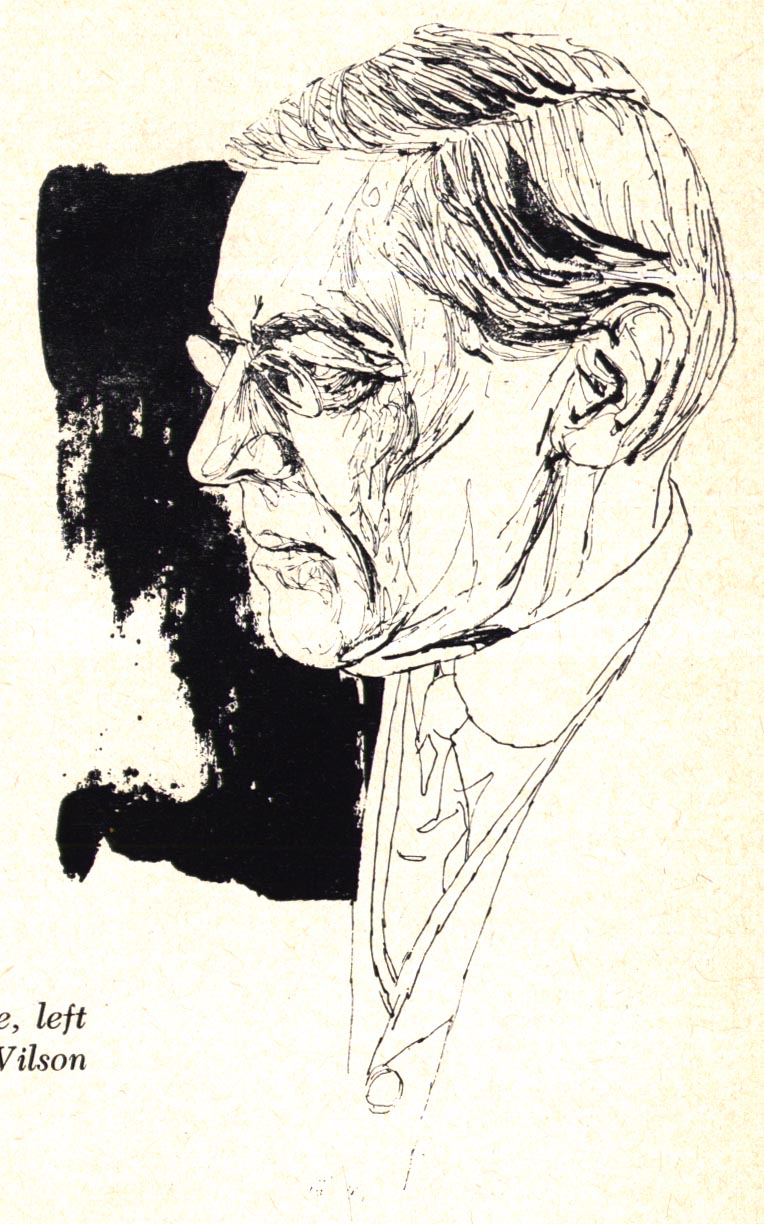
"At present," said Saris, "the line-and-color method seems to meet these specifications best."
* My Anthony Saris Flickr set
That first piece is really spectacular!
ReplyDeleteThanks so much for these, Leif! I've been a TI subscriber for a while now, and I can't remember the last time I've looked forward so much to each day's post. I'd never heard of Saris before, but over the course of the past week he's become one of my favorites! - Michael Lark
ReplyDeleteThis comment has been removed by the author.
ReplyDeleteThe use of liquid frisket in Webb's Landing is brilliant! I have a feeling I'll be "inspired" by that piece really soon! lol
ReplyDeleteWow, I love the last three portraits -- especially Wilson! :-D
ReplyDeleteThanks for sharing!
Thanks again, Leif, for the education. It keeps happening. Somehow, even though in my time, I missed out on Anthony Saris and his work. The name was familiar, but that's all. A unique and excellent draftsman....and a unique approach to illustration. A great TI blog.
ReplyDeleteWhat I'm enjoying the most in Saris' drawings is the staggered broken line he uses rather than a single clean stroke, which is so often over-rated by inkers.
ReplyDeleteThat line technique DBClemmons referred to, reminds me of David Stone Martin's line drawings. In illustration class, we would carefully do an accurate drawing on tracing paper, transfer it to illustration board, and try and ink over the pale transfered graphite line.. with our left hand, if we were right handed. We thought that might be the key to a loose spontaneous line. Well, the line definitely staggered, but we found that (at the most) 75% of the drawing looked cool, but the remainder just didn't cut it.. very hard to have enough control with the opposite hand, especially with an involved illustration.
ReplyDeleteGreat week on Saris, Leif. I had nearly forgotten about him.
Tom Watson
I am Anthony Saris daughter in law. He passed away two years ago. I have all of the originals. Anyone know of their value?
ReplyDelete